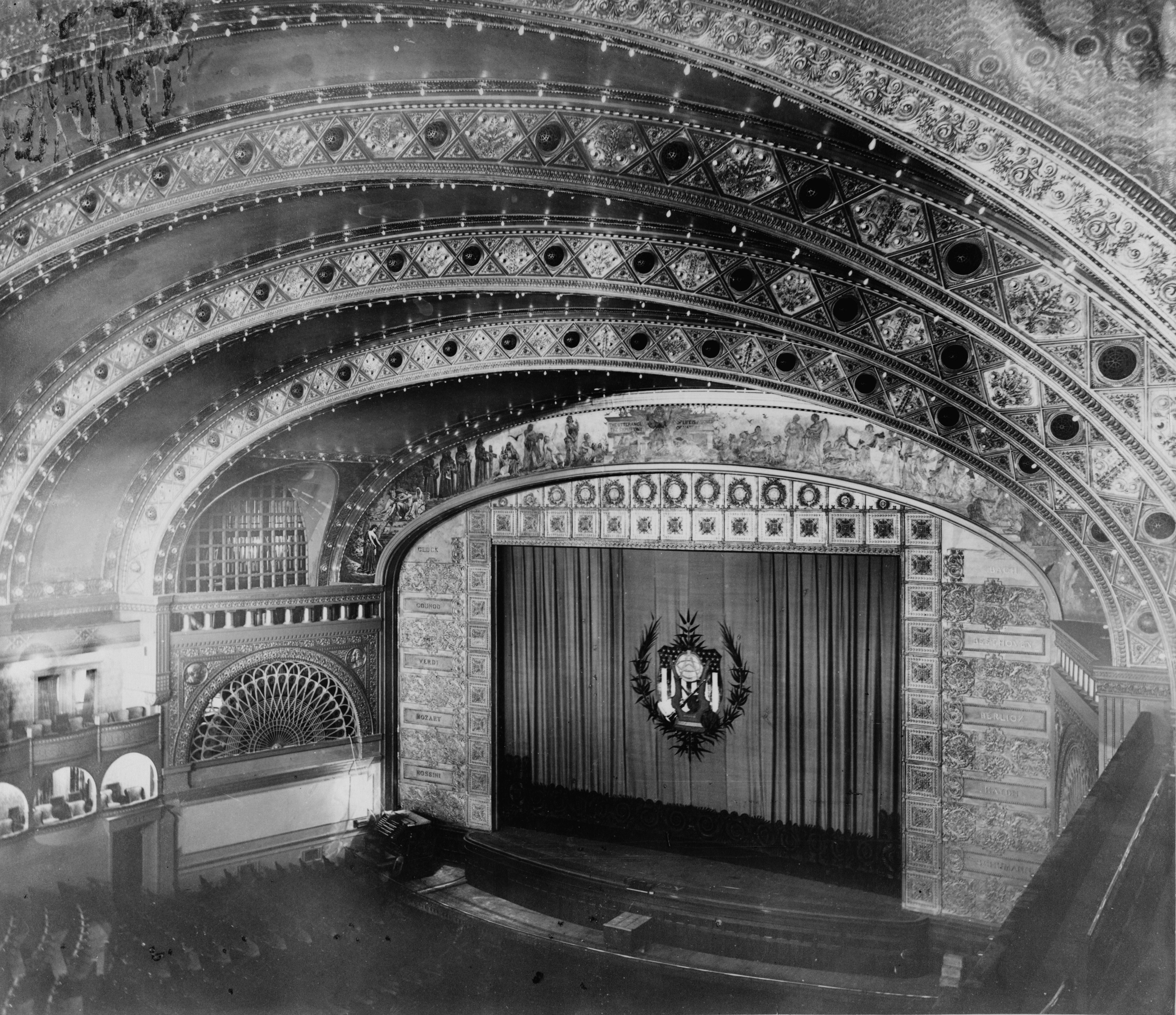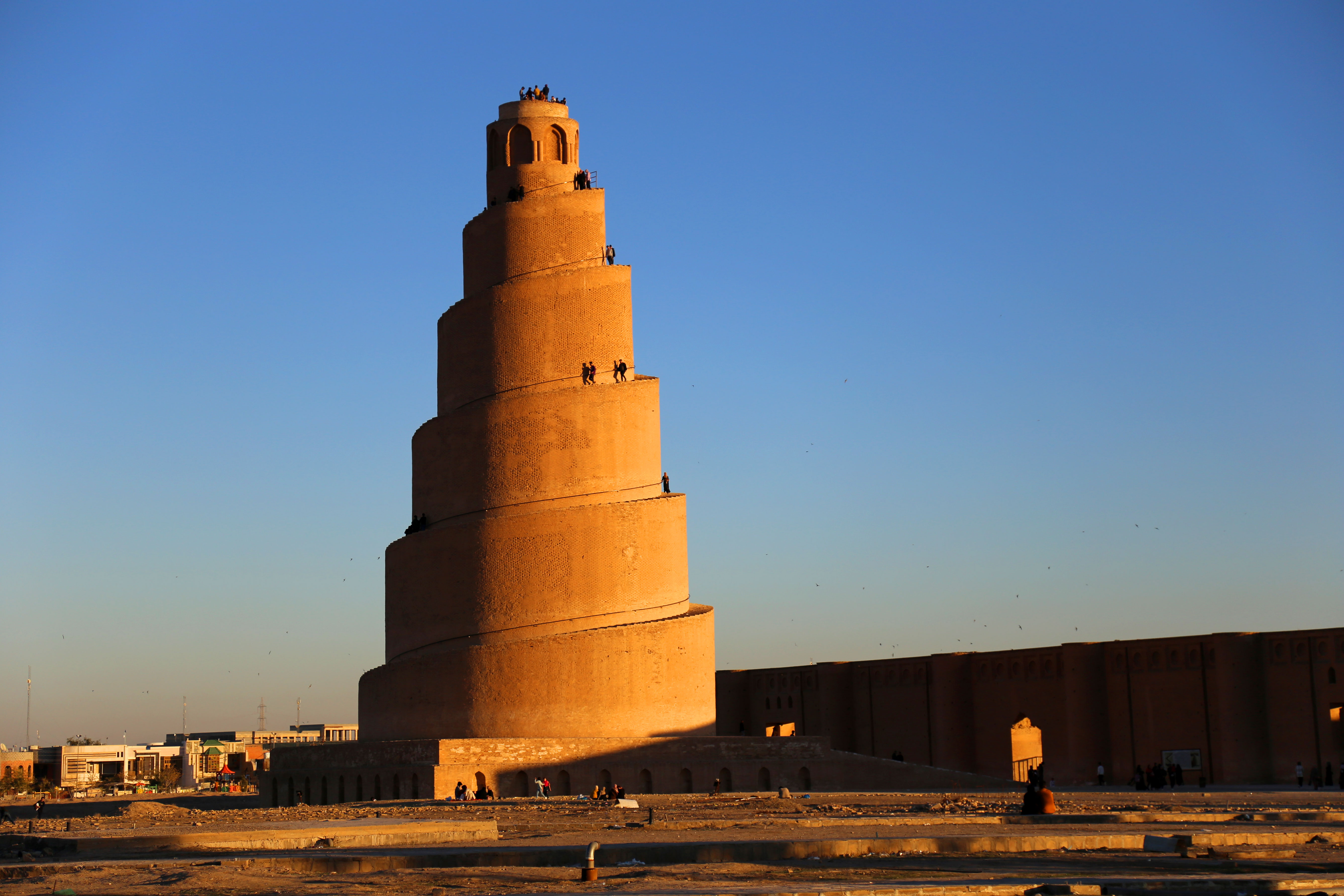|
Plan For Greater Baghdad
The Plan for Greater Baghdad was a project done by American architect Frank Lloyd Wright for a cultural center, opera house, and university on the outskirts of Baghdad, Iraq, in 1957–58. The most thoroughly developed aspects of the plan were the opera house, which would have been built on an island in the middle of the Tigris together with museums and a towering gilded statue of Harun al-Rashid, and the university. Due to the 1958 collapse of the Hashemite monarchy, development of the project stopped, and it was never built. Wright was among the many elite Western architects invited to Iraq as part of a campaign to modernize the capital city. Wright distinguished himself from this group by developing a plan making specific reference to Iraqi history and culture. For Wright, the plan was one of a handful of grandiose, outsize designs produced in the later part of his career. Commission and history In the 1950s, Iraq was awash with new oil money. The deal negotiated in the first ... [...More Info...] [...Related Items...] OR: [Wikipedia] [Google] [Baidu] |
Abd Al-Karim Qasim
Abd al-Karim Qasim Muhammad Bakr al-Fadhli al-Zubaidi ( ar, عبد الكريم قاسم ' ) (21 November 1914 – 9 February 1963) was an Iraqi Army brigadier and nationalist who came to power when the Iraqi monarchy was overthrown during the 14 July Revolution. He ruled the country as the prime minister until his downfall and execution during the 1963 Ramadan Revolution. During his rule, Qasim was popularly known as ''al-zaʿīm'' (الزعيم), or "The Leader". Early life and career Abd al-Karim's father, Qasim Muhammed Bakr Al-Fadhli Al-Zubaidi was a farmer from southern Baghdad and an Iraqi Sunni Muslim who died during World War I, shortly after his son's birth. Qasim's mother, Kayfia Hassan Yakub Al-Sakini was a Shia Feyli Kurd Muslim from Baghdad. Qasim was born in Mahdiyya, a lower-income district of Baghdad on the left side of the river, now known as Karkh, on 21 November 1914, the youngest of three sons. When Qasim was six, his family moved to Suwayra ... [...More Info...] [...Related Items...] OR: [Wikipedia] [Google] [Baidu] |
Al-Mansur
Abū Jaʿfar ʿAbd Allāh ibn Muḥammad al-Manṣūr (; ar, أبو جعفر عبد الله بن محمد المنصور; 95 AH – 158 AH/714 CE – 6 October 775 CE) usually known simply as by his laqab Al-Manṣūr (المنصور) was the second Abbasid caliph, reigning from 136 AH to 158 AH (754 CE – 775 CE) succeeding his brother al-Saffah (). He is known for founding the 'Round City' of Madinat al-Salam, which was to become the core of imperial Baghdad. Modern historians regard Al-Mansur as the real founder of the Abbasid Caliphate, one of the largest polities in world history, for his role in stabilizing and institutionalizing the dynasty.''The Cambridge History of Islam, volume 1: The Formation of the Islamic World'', ed. Chase F Robinson, March 2011 Background and early life According to Al-Suyuti's ''History of the Caliphs'', Al-Mansur lived 95 AH – 158 AH (714 CE – 6 October 775 CE). Al-Mansur was born at the home of the Abbasid family in Humeima (mod ... [...More Info...] [...Related Items...] OR: [Wikipedia] [Google] [Baidu] |
Round City Of Baghdad
The Round City of Baghdad is the original core of Baghdad, built by the Abbasid Caliph al-Mansur in 762–766 CE as the official residence of the Abbasid court. Its official name in Abbasid times was City of Peace ( ar, مدينة السلام, Madīnat as-Salām). The famous library known as the House of Wisdom was located within its grounds. Description According to Ya'qubi, the plans for the city were drawn up, but it was not until 2 August 762 that construction began, under the supervision of four architects. Huge resources were amassed for the project: the Arab chroniclers report 100,000 workers and craftsmen, and sums of 18 million gold dinars or 100 million silver dirhams. The caliphal Palace of the Golden Gate and the main mosque, as well as some of the administration offices, were apparently completed by 763, allowing al-Mansur to move his residence into the city, and the rest of the Round City was completed by 766. Mansur believed that Baghdad was the perfect city ... [...More Info...] [...Related Items...] OR: [Wikipedia] [Google] [Baidu] |
Neil Levine (art Historian)
Neil Arthur Levine (born 1941) is an American art historian and educator, who is a specialist on Frank Lloyd Wright. Career Levine graduated with a Bachelor of Arts from Princeton University in 1963, and wrote a senior thesis on Beaux-Arts architecture in the United States, supervised by Robert Rosenblum. Levine then received a Master of Arts, studying Frank Heyling Furness, and a Doctor of Philosophy in Art History from Yale University in 1975. His dissertation was on the architect Henri Labrouste and the Sainte-Geneviève Library, supervised by Vincent Scully. In 1975, Levine began serving as Emmet Blakeney Gleason Professor of the History of Art and Architecture at Harvard University. During the 1994-1995 academic year, he was named Slade Professor of Fine Art at the University of Cambridge. In 2003, Levine was awarded a Guggenheim Fellowship. Seven years later, Levine was elected as Fellow of the American Academy of Arts and Sciences. In that same year, Levine's lectur ... [...More Info...] [...Related Items...] OR: [Wikipedia] [Google] [Baidu] |
Tempe, Arizona
, settlement_type = City , named_for = Vale of Tempe , image_skyline = Tempeskyline3.jpg , imagesize = 260px , image_caption = Tempe skyline as seen from Papago Park , image_flag = Tempe, Arizona official flag.png , seal_size = , image_map = File:Maricopa County Arizona Incorporated and Unincorporated areas Tempe Highlighted 0473000.svg , mapsize = 250px , map_caption = Location of Tempe in Maricopa County, Arizona , image_map1 = , mapsize1 = , map_caption1 = , pushpin_map = Arizona#USA , pushpin_map_caption = Location in Arizona##Location in the United States , pushpin_relief = 1 , coordinates = , subdivision_type = L ... [...More Info...] [...Related Items...] OR: [Wikipedia] [Google] [Baidu] |
Aladdin
Aladdin ( ; ar, علاء الدين, ', , ATU 561, ‘Aladdin') is a Middle-Eastern folk tale. It is one of the best-known tales associated with ''The Book of One Thousand and One Nights'' (''The Arabian Nights''), despite not being part of the original text; it was added by the Frenchman Antoine Galland, based on a folk tale that he heard from the Syrian Maronite storyteller Hanna Diyab.Razzaque (2017) Sources Known along with Ali Baba as one of the "orphan tales", the story was not part of the original ''Nights'' collection and has no authentic Arabic textual source, but was incorporated into the book ''Les mille et une nuits'' by its French translator, Antoine Galland. John Payne quotes passages from Galland's unpublished diary: recording Galland's encounter with a Maronite storyteller from Aleppo, Hanna Diyab. According to Galland's diary, he met with Hanna, who had travelled from Aleppo to Paris with celebrated French traveller Paul Lucas, on March 25, 1709. Gal ... [...More Info...] [...Related Items...] OR: [Wikipedia] [Google] [Baidu] |
The Book Of One Thousand And One Nights
''One Thousand and One Nights'' ( ar, أَلْفُ لَيْلَةٍ وَلَيْلَةٌ, italic=yes, ) is a collection of Middle Eastern folk tales compiled in Arabic during the Islamic Golden Age. It is often known in English as the ''Arabian Nights'', from the first English-language edition (), which rendered the title as ''The Arabian Nights' Entertainment''. The work was collected over many centuries by various authors, translators, and scholars across West, Central and South Asia, and North Africa. Some tales trace their roots back to ancient and medieval Arabic, Egyptian, Sanskrit, Persian, and Mesopotamian literature. Many tales were originally folk stories from the Abbasid and Mamluk eras, while others, especially the frame story, are most probably drawn from the Pahlavi Persian work ( fa, هزار افسان, lit. ''A Thousand Tales''), which in turn relied partly on Indian elements. Common to all the editions of the ''Nights'' is the framing device of the story ... [...More Info...] [...Related Items...] OR: [Wikipedia] [Google] [Baidu] |
Roundel
A roundel is a circular disc used as a symbol. The term is used in heraldry, but also commonly used to refer to a type of national insignia used on military aircraft, generally circular in shape and usually comprising concentric rings of different colours. Other symbols also often use round shapes. Heraldry In heraldry, a ''roundel'' is a circular charge. ''Roundels'' are among the oldest charges used in coats of arms, dating from at least the twelfth century. Roundels in British heraldry have different names depending on their tincture. Thus, while a roundel may be blazoned by its tincture, e.g., ''a roundel vert'' (literally "a roundel green"), it is more often described by a single word, in this case ''pomme'' (literally "apple", from the French) or, from the same origins, ''pomeis''—as in "Vert; on a cross Or five pomeis". One special example of a named roundel is the fountain, depicted as ''a roundel barry wavy argent and azure'', that is, containing alternating horizo ... [...More Info...] [...Related Items...] OR: [Wikipedia] [Google] [Baidu] |
Proscenium
A proscenium ( grc-gre, προσκήνιον, ) is the metaphorical vertical plane of space in a theatre, usually surrounded on the top and sides by a physical proscenium arch (whether or not truly "arched") and on the bottom by the stage floor itself, which serves as the frame into which the audience observes from a more or less unified angle the events taking place upon the stage during a theatrical performance. The concept of the fourth wall of the theatre stage space that faces the audience is essentially the same. It can be considered as a social construct which divides the actors and their stage-world from the audience which has come to witness it. But since the curtain usually comes down just behind the proscenium arch, it has a physical reality when the curtain is down, hiding the stage from view. The same plane also includes the drop, in traditional theatres of modern times, from the stage level to the "stalls" level of the audience, which was the original meaning of t ... [...More Info...] [...Related Items...] OR: [Wikipedia] [Google] [Baidu] |
Baghdad Symphony Orchestra
Baghdad (; ar, بَغْدَاد , ) is the capital of Iraq and the second-largest city in the Arab world after Cairo. It is located on the Tigris near the ruins of the ancient city of Babylon and the Sassanid Persian capital of Ctesiphon. In 762 CE, Baghdad was chosen as the capital of the Abbasid Caliphate, and became its most notable major development project. Within a short time, the city evolved into a significant cultural, commercial, and intellectual center of the Muslim world. This, in addition to housing several key academic institutions, including the House of Wisdom, as well as a multiethnic and multi-religious environment, garnered it a worldwide reputation as the "Center of Learning". Baghdad was the largest city in the world for much of the Abbasid era during the Islamic Golden Age, peaking at a population of more than a million. The city was largely destroyed at the hands of the Mongol Empire in 1258, resulting in a decline that would linger through many centur ... [...More Info...] [...Related Items...] OR: [Wikipedia] [Google] [Baidu] |
Great Mosque Of Samarra
, native_name_lang = ara , image = Samara_spiralovity_minaret_rijen1973.jpg , image_upright = 1.4 , alt = , caption = The spiral minaret of the mosque , map_type = Iraq , map_size = 240 , map_alt = , map_relief = 1 , map_caption = Location in Iraq , coordinates = , coordinates_footnotes = , religious_affiliation = Islam , locale = , location = Samarra, Iraq , deity = , rite = , sect = , tradition = , festival = , cercle = , sector = , municipality = , district = , territory = , prefecture = , state = , province = , region = , country = , administration = , ... [...More Info...] [...Related Items...] OR: [Wikipedia] [Google] [Baidu] |

.png)


.jpg)


